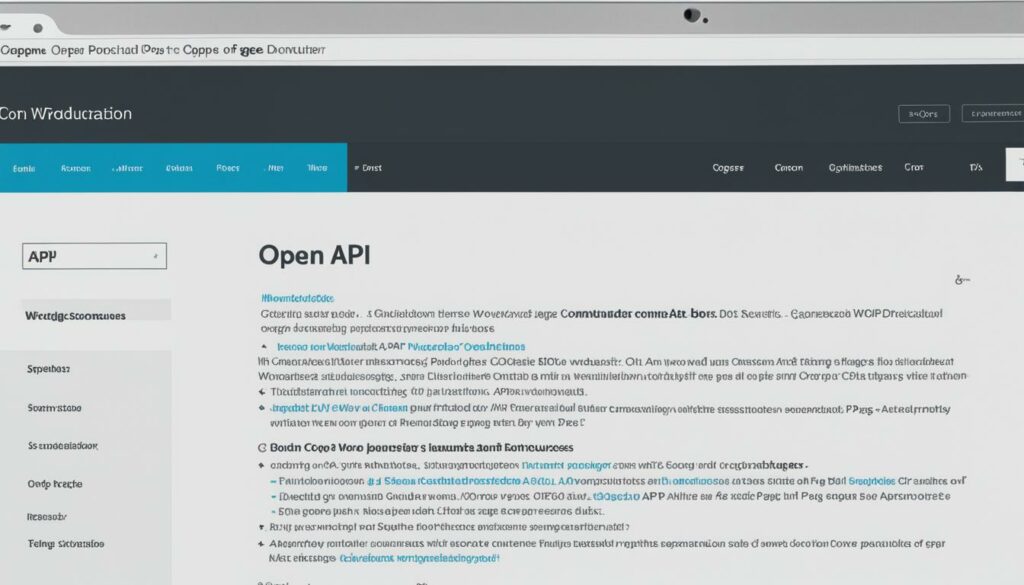When it comes to cybersecurity, staying one step ahead of potential threats is critical. That’s why mitigating zero-day exploits should be a top priority for individuals and organizations. Zero-day vulnerabilities refer to security flaws that hackers can exploit before developers have a chance to fix them. These vulnerabilities can lead to devastating zero-day attacks, compromising sensitive data and wreaking havoc on systems.
To protect yourself and your organization from these threats, it is essential to implement effective security strategies. By proactively addressing vulnerabilities and employing exploit prevention measures, you can significantly reduce the risk of falling victim to zero-day attacks.
- Mitigating zero-day exploits is crucial for maintaining cybersecurity.
- Zero-day vulnerabilities are security flaws that hackers can exploit before they are fixed.
- Implementing security strategies and exploit prevention measures is essential to protect against zero-day attacks.
- Zero-day attacks can lead to significant damage and compromise sensitive data.
- Being proactive and staying informed about the latest security measures is key to mitigating the risk of zero-day exploits.
Understanding Zero-Day Exploits and Attacks
Zero-day exploits are the methods that hackers use to take advantage of previously unidentified vulnerabilities in software or systems. These vulnerabilities, also known as zero-day vulnerabilities, are flaws that the developers are not yet aware of or have not yet released patches for. Hackers leverage these vulnerabilities to gain unauthorized access, initiate malicious activities, and compromise the security of targeted systems.
Zero-day attacks, on the other hand, occur when these exploits are successfully employed to infiltrate and compromise a vulnerable system. These attacks can be highly damaging, leading to data breaches, system crashes, and the unauthorized access or theft of sensitive information.
Zero-day exploits and attacks are particularly concerning because they take advantage of security weaknesses that are unknown to the software developers and, therefore, have no available patches or defenses. This makes them difficult to detect and defend against, as traditional security measures may not yet recognize or address these specific vulnerabilities.
“Zero-day attacks exploit the element of surprise, enabling hackers to bypass security measures and gain unauthorized access to systems before anyone can respond or implement countermeasures. This can have severe consequences for individuals, organizations, and even society as a whole.”
Recognizing Zero-Day Exploits
Recognizing and mitigating zero-day exploits requires a proactive and multi-faceted approach to security. It involves constant monitoring for new vulnerabilities, staying up-to-date with the latest security patches, and implementing advanced threat detection and prevention mechanisms.
One of the challenges in identifying zero-day exploits is the lack of available information and signatures to detect these attacks. Traditional security tools and antivirus software often rely on known patterns and signatures to detect threats, which may not apply to zero-day vulnerabilities.
As a result, organizations need to invest in advanced threat intelligence and detection systems that utilize machine learning algorithms and behavioral analysis. These systems can detect abnormal patterns, suspicious activities, and indicators of compromise that may signify the presence of zero-day exploits.
Creating a Zero-Day Protection Plan
Protecting against zero-day exploits requires a comprehensive and multi-layered security strategy. This approach should include:
- Regularly updating software and systems with the latest security patches to minimize the risk of known vulnerabilities.
- Implementing vulnerability management practices to identify, prioritize, and address potential weaknesses in software and infrastructure.
- Using network security tools, such as Intrusion Detection Systems (IDS) and Intrusion Prevention Systems (IPS), to monitor and block suspicious network traffic.
- Deploying advanced endpoint security solutions that include behavioral analysis, threat intelligence feeds, and next-generation antivirus (NGAV) capabilities.
- Conducting regular security assessments and penetration testing to identify and address potential vulnerabilities.
Zero-Day Attackers and Targets
Zero-day attacks are carried out by various types of malicious actors, including cybercriminals, hacktivists, individuals or groups involved in corporate espionage, and even state-sponsored actors engaged in cyber warfare. These attackers exploit newly discovered vulnerabilities before developers can address them, making it challenging for individuals and organizations to defend against such attacks.
Cybercriminals are motivated by financial gain and often target individuals and businesses to steal sensitive data, money, or intellectual property. They exploit zero-day vulnerabilities as part of their arsenal to launch sophisticated cyber attacks.
Hacktivists, on the other hand, are driven by political or ideological motives. They target organizations or government entities to promote their cause, disrupt services, or expose sensitive information. Zero-day attacks provide them with a potent weapon to achieve their objectives.
Corporate espionage involves individuals or groups seeking to steal valuable information from companies to gain a competitive advantage. These actors may exploit zero-day vulnerabilities to gain unauthorized access to systems or networks and steal sensitive data such as trade secrets or intellectual property.
State-sponsored actors engaged in cyber warfare leverage zero-day exploits to infiltrate the systems of their adversaries. These attacks can have significant political, economic, or military implications and are often conducted by highly skilled and well-resourced individuals or groups.
Zero-day attackers come from various backgrounds and have different motivations, but they all exploit vulnerabilities before they can be patched, posing a significant threat to individuals, businesses, and even national security.
Targets of Zero-Day Attacks
Zero-day attackers target a wide range of entities, depending on their motivations and objectives. These targets can include:
- Individuals and small businesses: Individuals and small businesses using vulnerable systems may become targets of opportunistic zero-day attackers looking to gain unauthorized access or extract personal information.
- Large organizations: Hackers may target large organizations, including corporations, government agencies, and political entities, to disrupt operations, steal sensitive information, or launch political or ideological attacks.
- Government institutions: State-sponsored actors engaged in cyber warfare often target government institutions to gain intelligence, influence geopolitics, or disrupt critical infrastructure.
Zero-day attacks can have devastating consequences for the targeted entities, resulting in financial losses, reputational damage, and potential national security risks.
| Types of Attackers | Targets |
|---|---|
| Cybercriminals | Individuals, businesses, financial institutions |
| Hacktivists | Corporations, government entities, political organizations |
| Corporate Espionage | Companies, research institutions, universities |
| Cyberwarfare | Government institutions, critical infrastructure |
Identifying Zero-Day Attacks
Detecting zero-day attacks can be a daunting task considering the unknown nature of these vulnerabilities. However, there are techniques that can significantly help in identifying such attacks and preventing potential damage to your systems and data. These detection techniques leverage advanced technologies and methodologies to stay one step ahead of cybercriminals.
1. Analyzing Malware Databases
One effective approach to identifying zero-day attacks is through the analysis of malware databases. These databases contain information about known malware samples, including their behavior and characteristics. By comparing the behavior of suspicious files against the entries in the database, it’s possible to flag potential zero-day attacks.
2. Machine Learning Algorithms
Machine learning algorithms have been proven to be invaluable in detecting zero-day attacks. By using historical data, these algorithms can identify patterns of behavior that indicate the presence of a previously unseen exploit. The algorithms are trained to analyze various data sources, such as network traffic and system logs, to identify abnormal activity that may indicate a zero-day attack.
3. Monitoring Network Traffic
Monitoring network traffic is another crucial technique for detecting zero-day attacks. By analyzing incoming and outgoing data packets, it’s possible to identify patterns that deviate from the norm. This includes unusual communication protocols, suspicious IP addresses, or unexpected data transfers. Network traffic monitoring tools can provide real-time alerts when potential zero-day attacks are detected.
“Machine learning algorithms have revolutionized the way we detect and respond to zero-day attacks. By continuously learning from data, these algorithms can adapt and evolve to stay ahead of emerging threats.” – Cybersecurity Expert
Implementing a combination of these detection techniques can significantly enhance your ability to identify and respond to zero-day attacks. However, it’s important to note that no single technique can guarantee complete protection. A comprehensive security strategy that encompasses multiple layers of defense is essential.
Now, let’s take a look at a real-world scenario that demonstrates the power of these detection techniques.

“The use of advanced detection techniques, such as machine learning and network traffic analysis, can greatly enhance an organization’s ability to detect and prevent zero-day attacks.” – Cybersecurity Analyst
Examples of Zero-Day Attacks
Zero-day attacks are a constant and evolving threat in the cybersecurity landscape. Over the years, several high-profile zero-day attacks have exposed the vulnerability of various software and systems. Understanding these examples helps us recognize the severity and impact of such attacks, urging us to take necessary precautions to protect our digital assets. Here are some recent notable examples:
Chrome Zero-Day Vulnerability
In May 2019, a zero-day vulnerability targeting Google Chrome was identified. This exploit allowed attackers to execute arbitrary code on a user’s system and gain unauthorized access to sensitive information. The vulnerability was actively exploited, highlighting the need for prompt patching and software updates to mitigate such risks.
Zoom Vulnerability
In 2020, the popular video conferencing platform Zoom faced a zero-day vulnerability that could grant remote access to a user’s device. This raised significant concerns regarding privacy and security, as unauthorized individuals could potentially eavesdrop on meetings or compromise sensitive data. Zoom quickly addressed the issue with patches and updates to ensure user safety.
Apple iOS Vulnerabilities
Apple’s iOS operating system has not been immune to zero-day vulnerabilities. Notable examples include the Pegasus spyware that exploited iOS devices through malicious links and the Trident vulnerability chain discovered in 2016. These vulnerabilities allowed hackers to remotely compromise iPhones, emphasizing the importance of staying vigilant and updating devices regularly.
Microsoft Windows Vulnerabilities
Microsoft Windows, being one of the most widely used operating systems, has also faced its fair share of zero-day vulnerabilities. In 2019, a vulnerability known as BlueKeep put millions of Windows systems at risk of remote code execution. Such vulnerabilities pose a significant threat to government institutions and organizations, underscoring the need for robust security measures and timely patch management.
Stuxnet
Stuxnet is a notorious example of a zero-day attack that targeted Iran’s nuclear program. Discovered in 2010, Stuxnet was a sophisticated worm that exploited multiple zero-day vulnerabilities to infiltrate and disrupt Iran’s uranium enrichment facilities. This attack shed light on the potential use of zero-day exploits in cyber warfare and the need for heightened security measures in critical infrastructure.
These examples demonstrate the real-world consequences of zero-day attacks and the importance of proactive security measures. To safeguard against such threats, it is crucial to stay updated with the latest patches, regularly assess system vulnerabilities, and employ robust security solutions.
| Zero-Day Attacks | Recent Examples |
|---|---|
| Chrome zero-day vulnerability | Exploit allowed unauthorized access to user’s systems |
| Zoom vulnerability | Allowed remote access to user’s devices |
| Apple iOS vulnerabilities | Enabled remote compromise of iPhones |
| Microsoft Windows vulnerabilities | Targeted government institutions and organizations |
| Stuxnet | Disrupted Iran’s nuclear program through multiple zero-day vulnerabilities |
Protecting Against Zero-Day Attacks
When it comes to safeguarding your systems and data from zero-day attacks, comprehensive protection is key. Implementing a multi-layered approach can significantly reduce the risk of falling victim to these highly targeted exploits.
Here are some essential measures to consider:
- Patch Management: Keeping your software and systems up to date is crucial. Regularly applying security patches provided by vendors helps mitigate the risk of known vulnerabilities being exploited.
- Vulnerability Management: Identifying and addressing vulnerabilities is critical for effective defense. Utilize vulnerability management tools and techniques to proactively identify potential weaknesses and ensure timely remediation.
- Web Application Firewall (WAF): Deploying a Web Application Firewall can provide an additional layer of protection. WAFs filter and examine incoming and outgoing network traffic, blocking suspicious activities and potential zero-day attacks.
- Endpoint Security Solutions: Protecting individual endpoints is vital in preventing zero-day attacks. Next-gen antivirus (NGAV) solutions, along with advanced endpoint detection and response (EDR) capabilities, can help detect and mitigate these threats efficiently.
By combining these measures, you can significantly enhance your zero-day protection and minimize the potential impact of these sophisticated attacks.
“Implementing a multi-layered approach can significantly reduce the risk of falling victim to zero-day attacks.”
Zero-Day Protection Comparison
| Patch Management | Vulnerability Management | Web Application Firewall (WAF) | Endpoint Security | |
|---|---|---|---|---|
| Protection Mechanism | Keeps software and systems up to date with security patches | Proactively identifies and addresses vulnerabilities | Filters and monitors network traffic to block suspicious activities | Offers advanced antivirus and threat detection capabilities |
| Key Benefits | Prevents exploitation of known vulnerabilities | Identifies potential weaknesses and enables timely remediation | Blocks suspicious traffic and potential zero-day attacks | Detects and mitigates zero-day threats on endpoints |
| Implementation Complexity | Relatively simple, requires regular update management | Varies depending on organization size and complexity | Deployment and configuration may require technical expertise | May require specialized deployment and monitoring |
| Cost | Minimal, typically included in software maintenance | Varies based on vulnerability management solution used | Costs associated with WAF implementation and maintenance | Cost depends on the chosen endpoint security solution |
By analyzing these zero-day protection methods, you can determine the most suitable solutions for your organization, considering factors such as level of expertise, budget, and overall security requirements.
Patch Management
In order to effectively mitigate the risk of known vulnerabilities being exploited, it is essential to prioritize patch management. Patch management involves regularly updating software and operating systems with security patches provided by vendors. By keeping your systems up to date, you can minimize the chances of falling victim to cyberattacks.
When it comes to patch management, one of the key aspects to consider is software updates. These updates often include security patches that address known vulnerabilities. It is important to regularly check for available updates and apply them promptly to ensure your software is equipped with the latest security measures.
Security patches play a crucial role in protecting your systems and data. They are specifically designed to address vulnerabilities that could be potentially exploited by cybercriminals. By installing security patches, you can significantly reduce the risk of a successful attack on your systems.
Vulnerability mitigation is a primary focus of patch management. Identifying vulnerabilities and promptly patching them helps strengthen the security posture of your systems. It is important to prioritize patching efforts based on the severity of the vulnerability. High-risk vulnerabilities should be addressed with utmost urgency to minimize the window of opportunity for attackers.
Implementing a robust patch management process is vital for both individuals and organizations. It ensures that all affected systems within your network are updated, reducing the overall risk of exploitation. By staying proactive and diligent in keeping your software and operating systems up to date, you can effectively protect yourself from potential vulnerabilities.
Patch management is a critical component of any robust cybersecurity strategy. By ensuring regular software updates and promptly applying security patches, you can strengthen your defenses and mitigate the risk of cyberattacks. Remember, vulnerability mitigation starts with effective patch management.
Benefits of Patch Management
- Protection against known vulnerabilities
- Reduced risk of cyberattacks
- Enhanced security posture
- Minimized window of opportunity for attackers
- Improved system stability and performance
Vulnerability Management
Vulnerability management plays a crucial role in maintaining the security of your systems and endpoints. It involves an ongoing process of identifying, assessing, and addressing vulnerabilities to ensure that your organization remains protected against potential threats. By implementing effective vulnerability management practices, you can reduce security risks and prevent zero-day exploits.
Why is Vulnerability Management Important?
Vulnerability assessment is the first step in vulnerability management. It involves using various tools and techniques to identify potential vulnerabilities in your systems, applications, and network infrastructure. By conducting regular vulnerability assessments, you can stay informed about the weaknesses in your IT environment and take appropriate action to address them.
Threat intelligence plays a critical role in vulnerability management. It involves gathering and analyzing information about potential threats, including the latest attack vectors and techniques used by cybercriminals. By leveraging threat intelligence, you can prioritize risks and develop strategies for remediation that are tailored to your specific environment.
Vulnerability management helps you stay one step ahead of cyber threats, enabling you to proactively protect your systems and data from potential security breaches.
The Remediation Process
Remediation is an essential aspect of vulnerability management. It involves taking appropriate action to address identified vulnerabilities and reduce the associated risks. Remediation can take various forms, depending on the nature and severity of the vulnerability.
The remediation process may include applying security patches and updates provided by software vendors, configuring systems and applications to mitigate vulnerabilities, implementing additional security controls, or even replacing outdated or unsupported software and hardware.
It’s important to prioritize remediation efforts based on the severity of the vulnerability and the potential impact it may have on your organization. By focusing on the most critical vulnerabilities first, you can effectively allocate your resources and minimize the risk of exploitation.
Reducing Security Risks with Vulnerability Management
A comprehensive vulnerability management program can significantly reduce security risks. By regularly assessing your systems for vulnerabilities, leveraging threat intelligence to identify emerging threats, and promptly remediating any identified weaknesses, you can strengthen your organization’s overall security posture.
Vulnerability management not only helps protect against zero-day exploits but also ensures that you are taking proactive steps to address known vulnerabilities. It allows you to stay ahead of potential attackers and minimize the likelihood of your systems becoming compromised.
Implementing a vulnerability management program requires a combination of technical expertise, effective processes, and dedicated resources. By investing in vulnerability management, you are taking a proactive approach to security and demonstrating your commitment to safeguarding your organization’s valuable assets.
| Benefits of Vulnerability Management | Risks Mitigated |
|---|---|
| Identifies and addresses vulnerabilities before they can be exploited | Zero-day exploits |
| Strengthens overall security posture | Data breaches |
| Provides proactive protection against potential threats | Malware infections |
| Safeguards sensitive data and intellectual property | Unauthorized access |
By establishing a robust vulnerability management program within your organization, you can effectively identify and address vulnerabilities, reduce security risks, and protect your systems and data from potential cyber threats.
Web Application Firewall (WAF)
A Web Application Firewall (WAF) is a crucial security device that safeguards your web applications by filtering and monitoring HTTP and HTTPS traffic between the application and the internet. It provides robust application-level security, offering protection against various types of cyber attacks, including zero-day exploits, Cross-Site Scripting (XSS), and SQL injection.
With the ever-increasing sophistication of attacks targeting web applications, implementing a WAF is essential for strengthening your security posture. By deploying a WAF, you can effectively mitigate the risk of zero-day exploits, which are attacks that take advantage of vulnerabilities that are unknown to software developers.
A WAF acts as a barrier between your web application and potential attackers, analyzing incoming traffic and detecting malicious behavior or patterns. By continuously monitoring and filtering traffic, a WAF can detect and block attacks in real time, providing you with peace of mind and preserving the integrity of your sensitive data.
One of the key advantages of a WAF is its ability to defend against zero-day attacks. Unlike traditional security measures that rely on known vulnerability databases, a WAF can identify and block attacks even when they exploit previously unknown vulnerabilities. This zero-day protection is crucial in the ever-evolving threat landscape, where attackers are constantly searching for new ways to breach your defenses.
Furthermore, a WAF can effectively combat Cross-Site Scripting (XSS) attacks, which manipulate website content to inject malicious scripts into users’ browsers. By inspecting and sanitizing incoming data, a WAF can prevent the execution of such malicious scripts, safeguarding your users’ sensitive information.
SQL injection attacks, which exploit vulnerabilities in database queries, are another common threat to web applications. A WAF can detect and block SQL injection attempts, preventing attackers from unauthorized access to your database and protecting your critical data.
Incorporating a WAF into your security infrastructure is a proactive step towards ensuring the protection of your web applications. By providing comprehensive application-level security and zero-day protection, a WAF plays a pivotal role in safeguarding your systems, mitigating threats, and preserving the trust of your users.
Benefits of a Web Application Firewall:
- Application-level security to protect your web applications
- Zero-day protection against unknown vulnerabilities and exploits
- Defense against Cross-Site Scripting (XSS) attacks
- Prevention of SQL injection attacks
- Real-time monitoring and blocking of malicious traffic
- Improved data integrity and user trust
Endpoint Security and Zero-Day Protection
When it comes to protecting your systems against zero-day attacks, endpoint security solutions are your frontline defense. These solutions combine advanced technologies, such as next-gen antivirus (NGAV), endpoint detection and response (EDR), and threat intelligence, to provide comprehensive protection for your endpoints.
Next-gen antivirus (NGAV) goes beyond traditional antivirus software by using artificial intelligence and machine learning algorithms to detect and block sophisticated malware and zero-day exploits. This proactive approach ensures that even the newest and most unknown threats are identified and neutralized.
Endpoint detection and response (EDR) capabilities further enhance your security posture by continuously monitoring and analyzing endpoint activities. This allows for real-time threat detection, incident response, and automated remediation, minimizing the impact of zero-day attacks.
Threat intelligence is a critical component of endpoint security, providing up-to-date information on the latest attack vectors, malware signatures, and vulnerabilities. By leveraging threat intelligence feeds, your endpoint security solution can stay ahead of emerging threats and apply proactive measures to prevent zero-day attacks.
Endpoint security solutions play a crucial role in protecting against zero-day attacks. By combining next-gen antivirus (NGAV), endpoint detection and response (EDR), and threat intelligence, these solutions empower organizations to detect and mitigate zero-day threats effectively.
Benefits of Endpoint Security for Zero-Day Protection
Deploying comprehensive endpoint security solutions offers several key benefits in the realm of zero-day protection:
- Early detection: NGAV utilizes advanced algorithms to detect and block zero-day exploits, minimizing the time window in which attackers can infiltrate your systems.
- Rapid response: EDR capabilities enable prompt incident response and remediation, mitigating the impact of zero-day attacks and preventing further damage.
- Proactive defense: By leveraging threat intelligence, endpoint security solutions can proactively defend against emerging threats, ensuring your systems are protected before exploits are even developed.
- Centralized management: Endpoint security solutions provide a unified platform for managing security policies, monitoring activities, and responding to incidents across all endpoints.
With the ever-evolving threat landscape, investing in robust endpoint security solutions is essential to safeguarding your organization from zero-day attacks.

| Endpoint Security Features | Benefits |
|---|---|
| Next-gen antivirus (NGAV) | – Advanced malware detection |
| Endpoint detection and response (EDR) | – Real-time threat detection and response |
| Threat intelligence integration | – Up-to-date information on emerging threats |
| Unified management console | – Centralized control and monitoring |
Conclusion
To protect your systems and data from the risks of zero-day exploits, it is crucial to adopt a proactive approach to security. By implementing effective security strategies, staying up to date with patches and software updates, conducting regular vulnerability assessments, and leveraging the power of endpoint security solutions, you can minimize the threat posed by these attacks.
Effective security strategies involve a multi-layered approach, encompassing patch management, vulnerability management, and the use of a Web Application Firewall (WAF). Patch management ensures that your software and systems are updated with the latest security patches, reducing the risk of known vulnerabilities being exploited.
Vulnerability management focuses on identifying, assessing, and addressing vulnerabilities across your systems. By utilizing threat intelligence and implementing remediation strategies, you can effectively reduce security risks and enhance your overall defense against zero-day exploits.
Endpoint security solutions, such as next-gen antivirus (NGAV) and endpoint detection and response (EDR) capabilities, play a critical role in safeguarding your systems. These solutions provide real-time threat intelligence and detection, enabling quick response and mitigation of zero-day threats.
FAQ
What are zero-day exploits?
Zero-day exploits refer to newly discovered security vulnerabilities that hackers can exploit before developers can fix them.
What is a zero-day attack?
A zero-day attack occurs when hackers use zero-day exploits to target and compromise a vulnerable system.
Who carries out zero-day attacks?
Zero-day attacks can be carried out by cybercriminals, hacktivists, individuals or groups involved in corporate espionage, and even state-sponsored actors engaged in cyber warfare.
How are zero-day attacks detected?
Zero-day attacks can be challenging to detect, but techniques such as analyzing malware databases, using machine learning algorithms, and monitoring network traffic for suspicious activity can help identify them.
Can you provide examples of recent zero-day attacks?
Some notable examples of zero-day attacks include the Chrome zero-day vulnerability, the Zoom vulnerability allowing remote access, Apple iOS vulnerabilities compromising iPhones, Microsoft Windows vulnerabilities targeting governments, and the infamous Stuxnet worm.
How can I protect against zero-day attacks?
Protecting against zero-day attacks requires a multi-layered approach, including timely patch management, comprehensive vulnerability management, the use of a Web Application Firewall (WAF), and deploying endpoint security solutions.
What is patch management?
Patch management involves regularly updating software and operating systems with security patches provided by vendors to mitigate the risk of known vulnerabilities being exploited.
What is vulnerability management?
Vulnerability management is an ongoing process of identifying, assessing, and addressing vulnerabilities across systems and endpoints to reduce security risks and prevent zero-day exploits.
What is a Web Application Firewall (WAF)?
A Web Application Firewall (WAF) is a security device that filters and monitors HTTP and HTTPS traffic between a web application and the internet, providing application-level security and protecting against various attacks, including zero-day exploits.
How does endpoint security protect against zero-day attacks?
Endpoint security solutions, such as next-gen antivirus (NGAV) and endpoint detection and response (EDR) capabilities, along with access to threat intelligence, help detect and mitigate zero-day threats.
How can I mitigate zero-day exploits?
Mitigating zero-day exploits requires implementing effective security strategies, staying up to date with patches and software updates, conducting vulnerability assessments, and deploying comprehensive endpoint security solutions.











